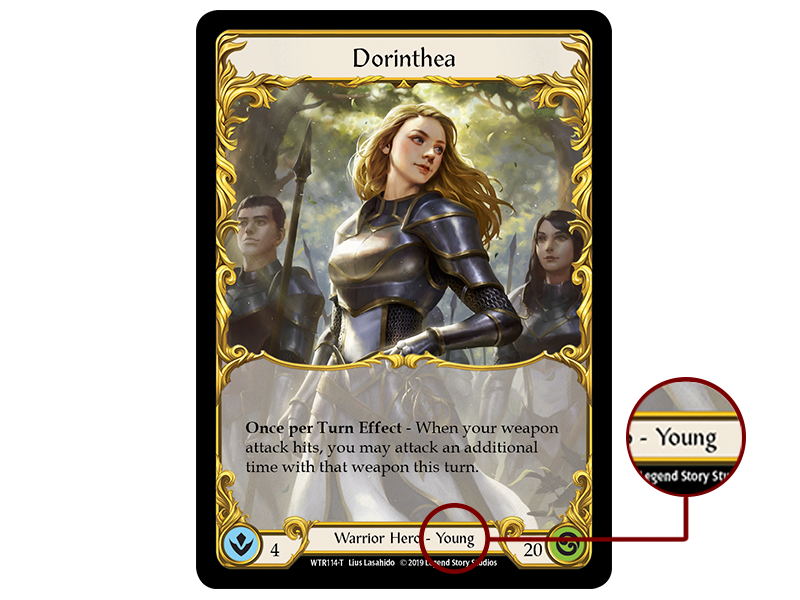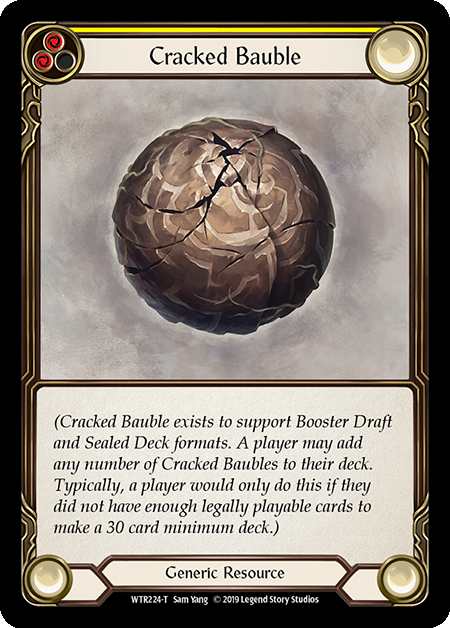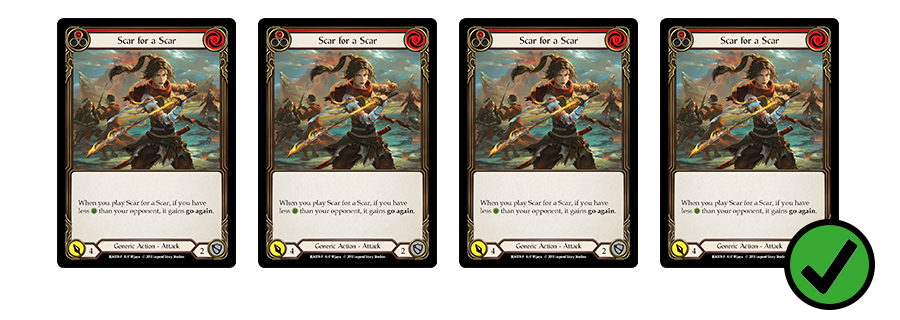Flesh and Blood is designed for incredible sealed deck and booster draft play, collectively referred to as limited formats. Limited formats are played using young hero cards, which are plentifully available as token cards in Welcome to Rathe (WTR) booster packs.

Sealed Deck
Players open 6 booster packs and use the contents to construct a 30 card minimum deck (not including hero card, weapon card(s), and equipment cards).
Booster Draft
The suggested number of players for a booster draft is 8. Each player requires 3 booster packs to draft.
Simultaneously, all players in the draft open 1 of their 3 packs, and remove the token card from the pack. They then choose (draft) 1 card from among the remaining cards, placing it face down in front of them, and pass the remaining cards in the pack to the player on their left. This process continues until all the cards in the pack have been drafted.
The second pack is drafted the same as above, with the exception that packs are passed to the player on the right after each card is drafted.
The third pack is drafted the same as the first pack (passing to the left).
Players construct a 30 card minimum deck (not including the hero card, weapon card(s), and equipment cards) from the cards they have drafted.
If a player can not construct a 30 card minimum deck from the cards they have drafted (usually because they messed up their draft), they add Cracked Baubles to their deck until the number of cards in their deck is at least 30. Cracked Baubles are plentifully available as token cards in booster packs.
Players keep the cards they draft.

Deck Construction – Heroes and Weapons
Only young hero cards are legal for limited formats.
Players may add a young hero and weapon card(s) of their choice to their card pool during deck construction. Typically, cards added this way would be from a publicly available pool of young hero and weapon token cards provided by the tournament organizer or by pooling the token cards opened from the booster packs between all players in the event. (Young hero and weapon token cards are plentifully available in booster packs.)
In official tournaments that require deck registration (such as The Calling), a player must register a hero card and play as that hero for the duration of the tournament. For tournaments that do not require deck registration, a player may change hero between rounds.
Deck Construction – Generic and Class Cards
All cards in your deck, and equipment and weapons you start the game with, must either be generic or have the same class type as your hero card. For example, if your hero class is Ninja, you can not have Warrior cards in your deck or use a Warrior weapon or equipment.
Deck Construction – No Card Limit
The 3 card limit applicable to constructed formats does not apply to limited formats. For example, if you open or draft 4 copies of Scar for a Scar (R), you may include all 4 copies in your deck.

Match Structure
Official sealed deck tournament matches are best of one games, 30 minutes per round.
Official booster draft tournament matches are best of one games, 30 minutes per round.
Start of Game Procedure
- Both players reveal their hero card, then;
- A random method is used to determine who chooses to play first, then;
- Both players choose the equipment, weapon, and 30 card minimum deck they will use for this game, then;
- Both players shuffle and present their deck to the opponent for final shuffle and/or cut.
- Both players reveal the weapon(s) and equipment they have chosen for this game, draw cards up to their hero's intellect, and begin the first turn of the game.
The round time includes provision for the start of game procedure. Both players must complete the start of game procedure and present a randomized deck to their opponent within 5 minutes of the round beginning. For best of three matches, the start of game procedure for the second and third games must be completed within 3 minutes from the conclusion of the previous game.
End of Match Procedure – Swiss Rounds
When time is called in the round and a winner of the current game is yet to be determined, the turn player completes their turn, then 3 additional turns (in total between both players) are played. At the conclusion of the additional turns, if a winner of the game has not been determined, the current game is a draw.
End of Match Procedure – Single Elimination Rounds
If the match being played is during an elimination round of the tournament, and a winner of the current game has not been determined at the conclusion of additional turns, then;
- If a player has won more completed games in the match than the opponent, that player is declared the winner of the match.
- If the number of completed games in the match is tied, the hero with the highest life total is declared the winner of the match. If life totals are tied, the game will continue until one hero has a higher life total, at which point the hero with the highest life total is immediately declared the winner of the match.
If a single elimination match is tied after the completion of additional turns, or time in the round has been called before the first turn of a game has begun and no player has more game wins in the match than another player, then players will start a new game with 4 turns total (2 turns per player). At the end of the fourth turn, the hero with the highest life total is declared the winner of the match. If life totals are tied, the game will continue until one hero has a higher life total, at which point the hero with the highest life total is immediately declared the winner of the match.